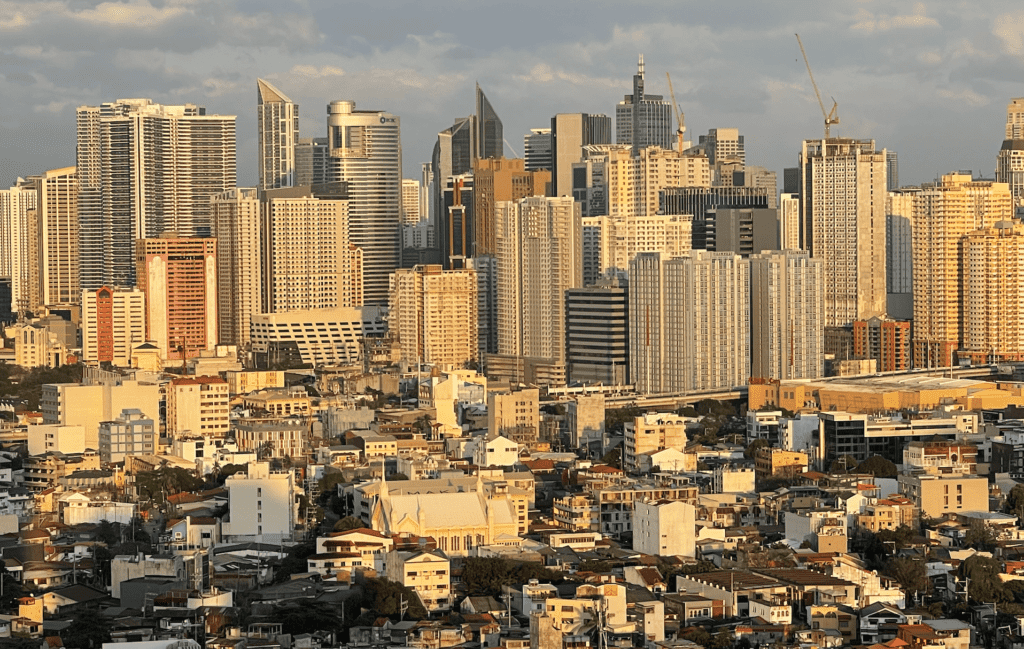Demand for office space is generally picking up, but it is unlikely to return to the pre- pandemic levels this year, a leading property management and consultancy firm said.

“Has demand caught up with pre-pandemic levels? The answer to that is no,” said Morgan McGilvray, Santos Knight Frank (SKF) senior director, occupier strategy & solutions, at the company’s virtual property briefing.
“The demand, at least at the moment, it’s just not there. Demand is certainly getting better, but there’s no evidence yet that it’s going to be kind of the 2018-2019 levels,” he said, citing the continued absence of POGO (Philippine Offshore Gaming Operators) sector continued to temper what could have been a faster recovery in demand.
“The good news is that demand is generally picking up, but maybe holding it up against the kind of those immediate years before pre pandemic. That might be a little too much at this point,” he said.
Pre-pandemic, vacancy rate in office space in Metro Manila hit a low of 4.7 percent to a high of 5.68 percent, driven by the combined strong demand from the business processing outsourcing (BPO) firms and the POGO locators.
But when the pandemic hit, vacancies in office buildings climbed, hitting a high of 20.26 percent in the last quarter of 2021 as BPOs left their offices and implemented “work from home” arrangements. The POGOs also left the country, starting even prior to the pandemic.
As of the second quarter this year, SKF data showed that vacancy rate in Metro Manila has gone up to a high of 22.69 percent.
As more BPO employees start returning to their physical offices in the first half of the year, SKF also saw an increase in leasing activity for the first time in a while. However, with 228,500 square meters of new office space also added to the market in the second quarter, the Metro Manila vacancy rate still rose to 23 percent, said McGilvray.
McGilvray noted that also contributing to the high vacancy rate is continuing supply as construction of office buildings did not stop even during the pandemic.
But the BPO sector is expected to lead the demand for office space, he said.
He explained that the BPO sector is a big beneficiary from the depreciation of the local currency against the US dollar as more foreign BPO firms would be attracted to locate in the country due to the competitive foreign exchange rate. The peso is now at P56 to the US greenback.
As Western companies continue to cut costs, more outsourcing can be expected to come to the Philippines, spurring office demand for the rest of the year.
With demand generally picking up, Morgan forecasts the high vacancy rate will start “creeping” down this year.
Overall, SKF predicts that the Philippines’ property sector is likely to see significant recovery in the next two to three years into the administration of President Ferdinand Romualdez Marcos, Jr., as demand returns on both commercial and residential property.
If you like this article, share it on social media by clicking any of the icons below.
Or in case you haven’t subscribed yet to our newsletter, please click SUBSCRIBE so you won’t miss the daily real estate news updates delivered right to your Inbox.
The article was originally published in Manila Bulletin and written by Bernie Cahiles-Magkilat.







More Stories
Vista Land Celebrates 50 Years with Sandiwa: An Event Honoring Leadership, Legacy, and the Filipino Dream of Homeownership
Vista Land Celebrates Love Month in Ilocos Region
Vista Land Bridges Cebuano Heritage and Progress with Valencia by Vista Estates